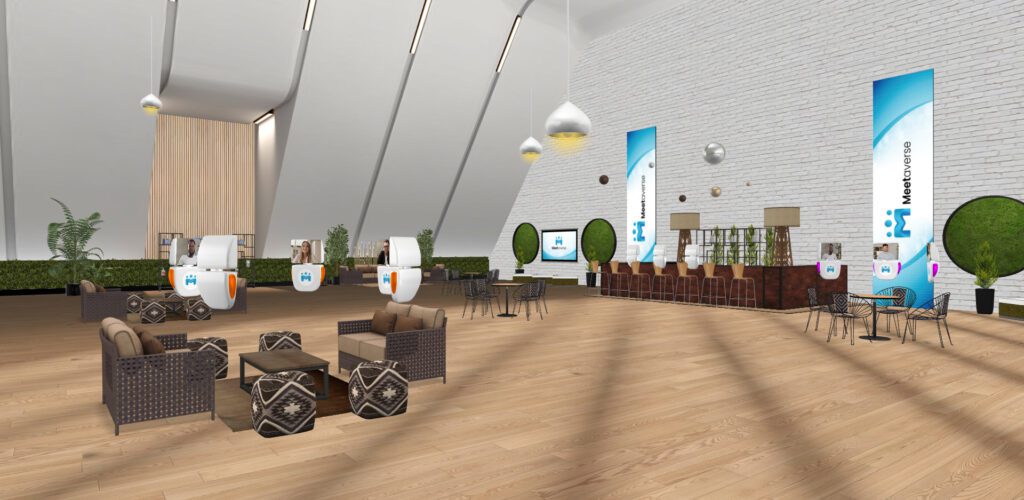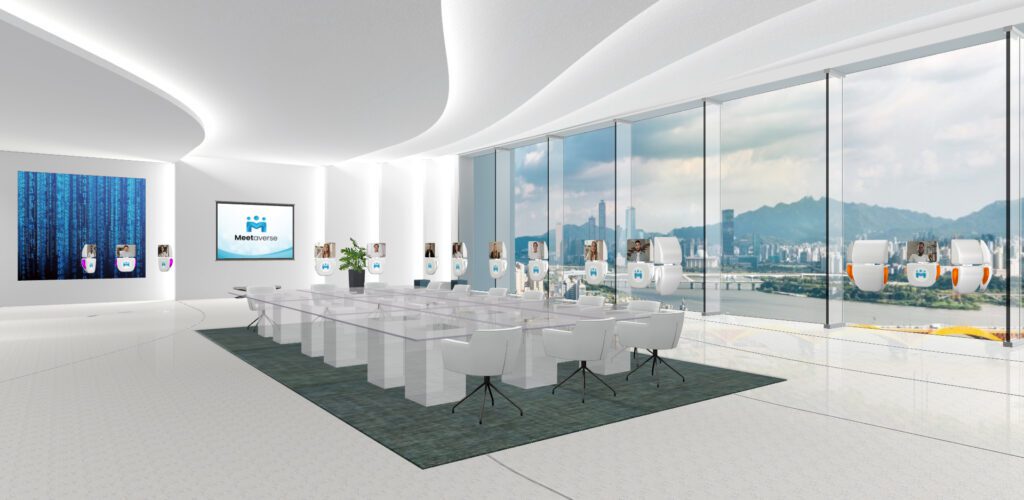In the digital realm, the metaverse has opened up new opportunities for brands to engage users through metaverse avatars. These virtual representations enable individuals to interact and have a sense of identity in virtual environments, making them ideal for corporate events and business engagements.
We will delve into the world of avatars in the metaverse, exploring their various types, benefits for branding, and the process of creating them.
By understanding the power of metaverse avatars, brands can unlock exciting possibilities for immersive experiences and enhance their presence in the digital landscape.
Avatars are digital representations of yourself in the metaverse, tied to your identity or digital account. They can take the form of humans, animals, or even inanimate objects. In professional settings, human avatars dressed in business attire are commonly chosen. However, as the metaverse evolves, avatar fashion is expected to evolve as well.
Metaverse avatars offer a new level of flexibility compared to avatars on other platforms. They can seamlessly transition between different virtual worlds within the metaverse, carrying over your chosen appearance and becoming your identity in that virtual universe.

Metaverse avatars exhibit a diverse range of appearances and identities. For instance, some avatars may closely resemble their real-world counterparts, replicating their physical features and attire. They strive for realism, capturing facial expressions, body movements, and even clothing details. On the other hand, avatars in the metaverse can also take on imaginative and fantastical forms.
Users have the freedom to create avatars that embody mythical creatures, superheroes, or any other character they can imagine. This flexibility allows for self-expression and personalization within the virtual realm, fostering a rich and diverse visual landscape in the metaverse.
Metaverse avatars have their advantages and disadvantages. On the positive side, avatars in the metaverse offer a sense of privacy in online events, allowing users to interact comfortably with unfamiliar attendees. They provide an immersive “in-person” experience from the comfort of one’s home and serve as a means to explore and experiment with identity.
However, limitations in current technology can make it challenging to accurately convey facial expressions and body language through avatars. Despite these drawbacks, metaverse avatars bring many benefits, enabling enjoyable and interactive participation in a variety of virtual activities.
Avatars and metaverse are inseparable, forming a synergistic relationship that elevates immersive experiences.In the avatar metaverse, users can enjoy a range of special features that enhance their virtual experiences and interactions. Features include:
With their unique capabilities for product representation, stage customization, and interactive engagements, avatars in the metaverse empower users to shape their digital identities and forge meaningful connections in this transformative landscape.

Metaverse and avatars go hand in hand as essential components of the virtual realm. Avatars serve as the primary means for individuals to join the metaverse community, socialize, and interact within the virtual environment. They can take on various forms, such as:
Avatars allow users to express their identity and enhance the metaversal experience.
Digital avatars metaverse play a crucial role in enhancing user experiences by serving as virtual embodiments that enable seamless navigation, interaction, and participation in immersive virtual environments. Metaverse digital avatars are the ones responsible for:
As the metaverse continues to expand, the significance of digital avatars in metaverse is becoming increasingly evident. With a growing number of people signing up for apps that enable them to create metaverse avatars, understanding the different types available has become crucial for maximizing the metaverse experience.
Let’s explore the various types of avatars in metaverse that are gradually encroaching:
Typically used by virtual reality users, avatar in virtual reality allow users to view the virtual environment from the perspective of their avatar. However, due to limited tracking capabilities, avatar in VR often lack lower body representation and focus on the upper torso and arms. These avatars incorporate face-tracking capabilities to facilitate collaboration and express emotions.
Platforms such as Meta’s Horizon Worlds, Microsoft’s AltspaceVR, and Spatial commonly utilize virtual reality avatar, which are optimized for older systems and offer a first-person perspective for users.
2D avatars were among the earliest forms of metaverse avatars, typically appearing as flat representations of the user. These avatars are commonly utilized within 2D environments and often take the form of a picture or pixel-based representation of an individual.
They bear resemblance to the player representations found in older video games with 8 or 16-bit graphics. While less immersive compared to their 3D counterparts, 2D avatars retain a nostalgic charm and are well-suited for certain contexts within the metaverse.
3D avatars now offer users a fully humanoid form that can be observed from various angles, providing a more immersive and realistic experience. These avatars encompass intricate details such as hair, skin tone, and other lifelike features, further enhancing the visual fidelity and expression available to users in the metaverse.
Full-body avatars represent a significant advancement in metaverse avatars, as they utilize sensors to capture and replicate the user’s entire body movements in virtual spaces. These avatars go beyond hand tracking and extend to recognizing leg movements, enabling users to interact more naturally and freely within the digital realm. While currently limited to a few VR games and requiring specific hardware for full-body tracking, the use of full-body avatars is expected to expand in the future.
They offer enhanced:
These makes them valuable for applications such as gaming, virtual reality experiences, combat simulations, concerts, and other forms of media production within the metaverse. The incorporation of full-body avatars is a testament to the evolving capabilities and potential of metaverse technologies.
Want to create a virtual event?
Leave your contact information and a Meetaverse professional will be happy to tell you more about how we can help

Leg-less virtual reality avatar, a type of 3D avatar for metaverse, are similar to avatar virtual reality but intentionally exclude rendering the user’s legs. This metaverse avatar design choice serves multiple purposes, including reducing system requirements, addressing height-related issues, and accommodating the absence of leg sensors on VR systems.
These avatars offer a creative and unique way for users to navigate and interact within the virtual environment, often utilizing floating or hovering motions. The popularity of leg-less avatars has grown in recent years, providing users with an alternative means of expressing their digital identity in the metaverse while optimizing performance and user experience.
Human-like avatars are a prevalent type of metaverse avatar that closely resembles real-life individuals. These avatars are designed to replicate human features, including facial expressions, body proportions, and movements, providing a sense of familiarity and relatability.
Human-like avatars have become a popular choice for users in the metaverse, as they allow for a more seamless transition between the virtual and physical worlds. With advancements in technology, human-like avatars can now capture subtle nuances in facial expressions and gestures, further enhancing the immersive and realistic nature of the metaverse experience.
Avatars metaverse have become indispensable for business and virtual corporate events, providing a professional representation of individuals in the digital realm. Attendees value the authenticity of seeing the actual people behind the avatars, enhancing credibility and fostering trust within the metaverse environment.
Various effective methods exist for projecting real individuals into the metaverse, seamlessly integrating their physical presence:
For individuals without specialized hardware or access to volumetric video capabilities, video-based avatars offer a practical alternative. Platforms like Meetaverse combine the benefits of 3D spaces and virtual environments with the ability to project real people through video avatars, ensuring clear interactions and networking opportunities during virtual conferences and meetings.

Metaverse avatars have revolutionized brand engagement, providing immersive and interactive opportunities for user interaction.
The key benefits of creating the best metaverse avatars for branding include:
Overall, avatar on metaverse offer a range of benefits, including personal connection, customization, immersive experiences, branding opportunities, and community building. They empower individuals and businesses to shape their digital identity and fully participate in the dynamic and evolving metaverse landscape.

Creating a metaverse avatar is an exciting and creative process that allows you to express your unique identity. Here are the steps how to make a metaverse avatar:
By following these steps, you can create a metaverse avatar that reflects your brand’s style and identity, allowing for immersive and engaging interactions within the metaverse.
Meetaverse is a cutting-edge virtual event platform that facilitates seamless online events, conferences, and gatherings. It offers a range of interactive features and customization options to enhance engagement and create memorable virtual experiences for participants.
Meetaverse allows users to create personalized avatars to represent themselves in virtual gatherings. It provides a unique and immersive experience for attendees to interact and network in a virtual environment.
Virtual avatar metaverse play a crucial role in exploring different identities and realities. Just as we have different outfits for various occasions, avatars allow us to express different aspects of ourselves. Whether fully virtual or a combination of virtual and real through video, avatars offer a range of features for attendees in the Metaverse.
They provide the confidence to navigate professional settings and showcase unique styles that may not exist in the physical world. While current technological limitations may restrict some avatar capabilities, as technology and the metaverse progress, avatars and the events they participate in will continue to evolve.
Join us in the metaverse and let your avatar be your guide. Book a demo today!
Want to create a virtual event?
Leave your contact information and a Meetaverse professional will be happy to tell you more about how we can help
Yes, the metaverse offers avatars that enable users to represent themselves in virtual environments, allowing for immersive and interactive experiences.
Metaverse avatars can be obtained by choosing a platform, customizing the avatar’s appearance, and utilizing the avatar creation tools provided by the selected platform.
The cost of creating a metaverse avatar varies depending on the platform and customization options available, with different platforms offering a range of pricing options for avatar creation and customization features.
Avatars in the metaverse are digital representations of individuals that users can embody to navigate, interact, and participate in virtual environments, enabling a more immersive and personalized experience within the metaverse.
Metaverse platforms are taking immersive branding strategies to the next level...
read moreUnlock the metaverse’s potential for business brands with our detailed gui...
read moreThe metaverse may not be as ubiquitous as it was during the height of the pandem...
read more

![How to Host a Virtual Event in the Metaverse: Definitive Guide [2024]](https://meetaverse.com/wp-content/uploads/2023/07/blog-16.webp)